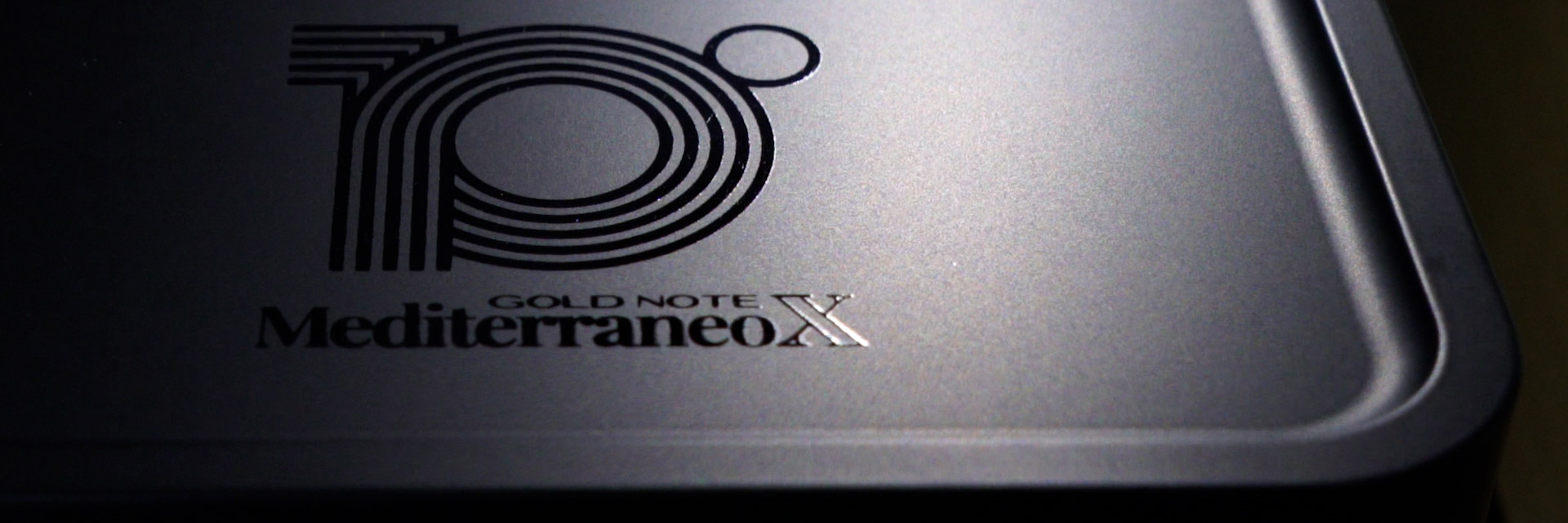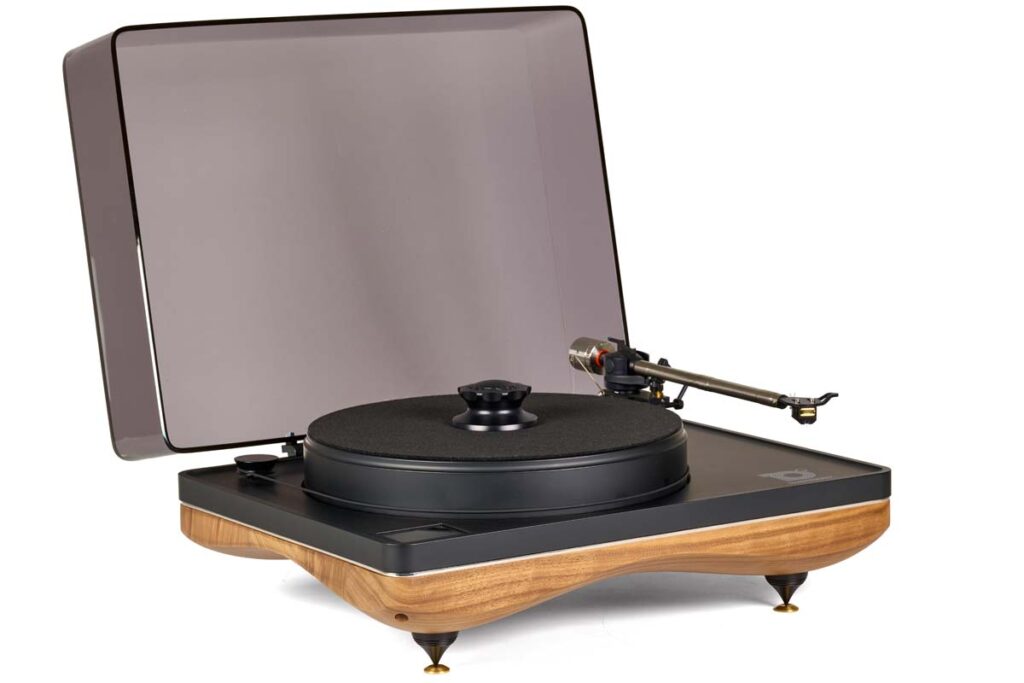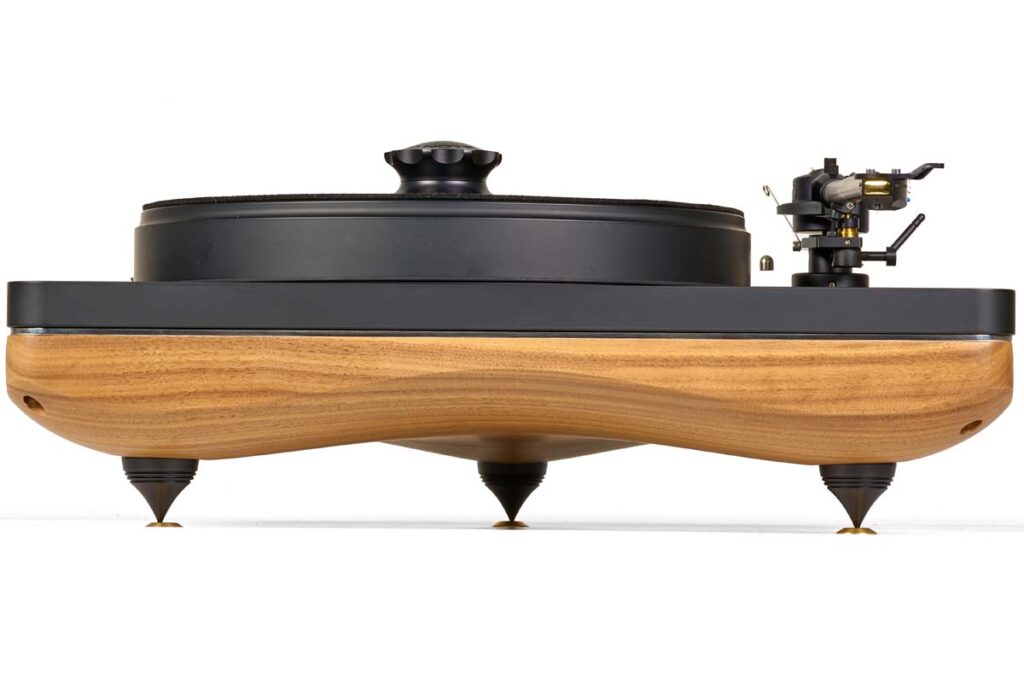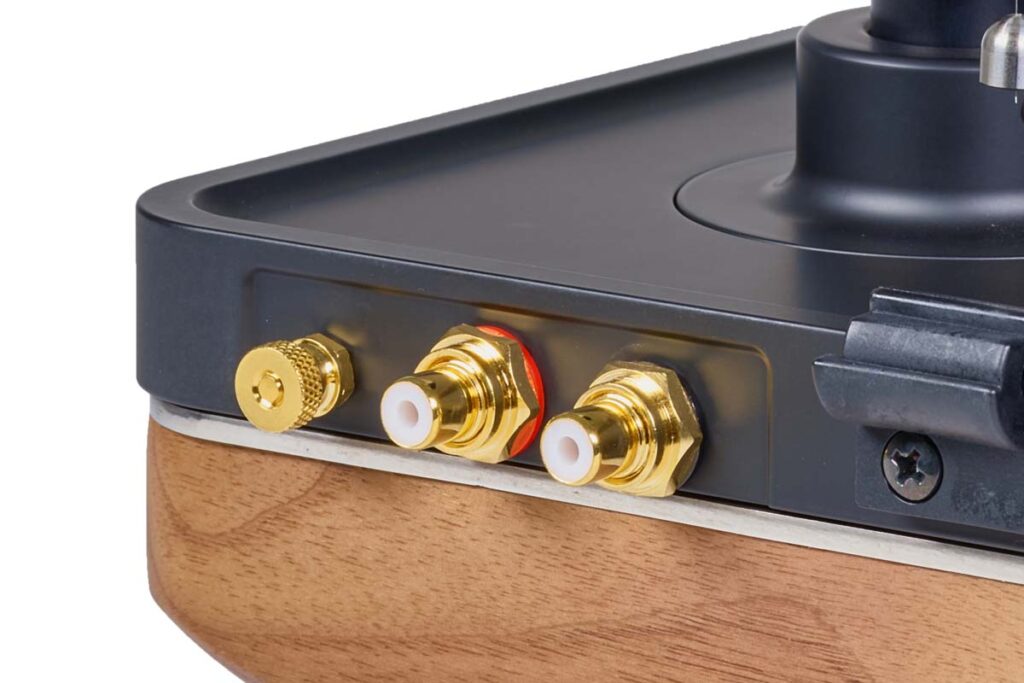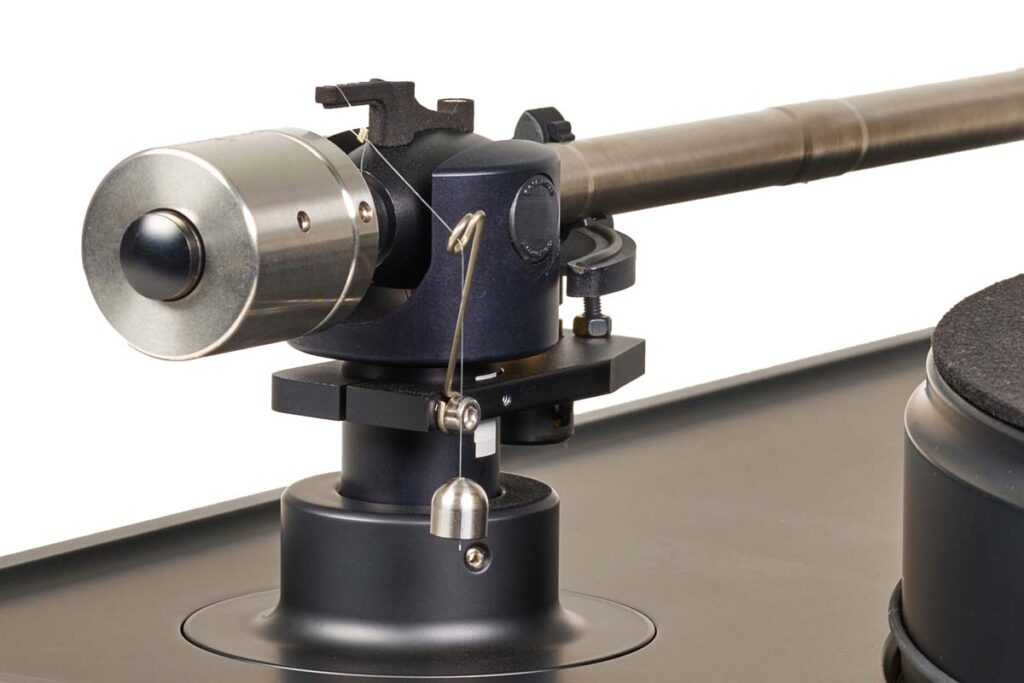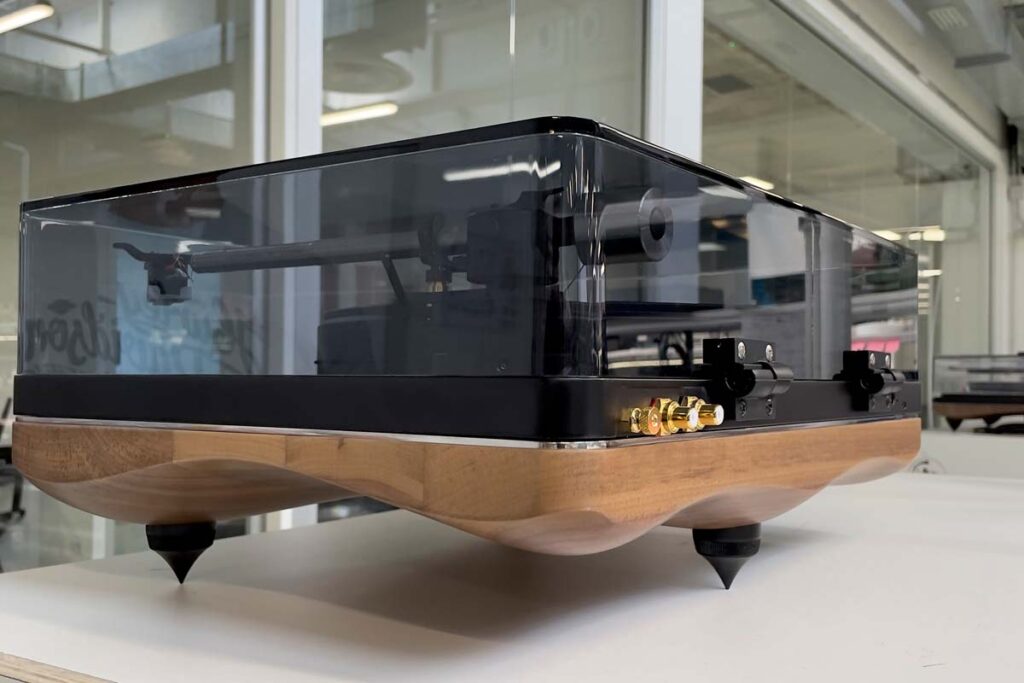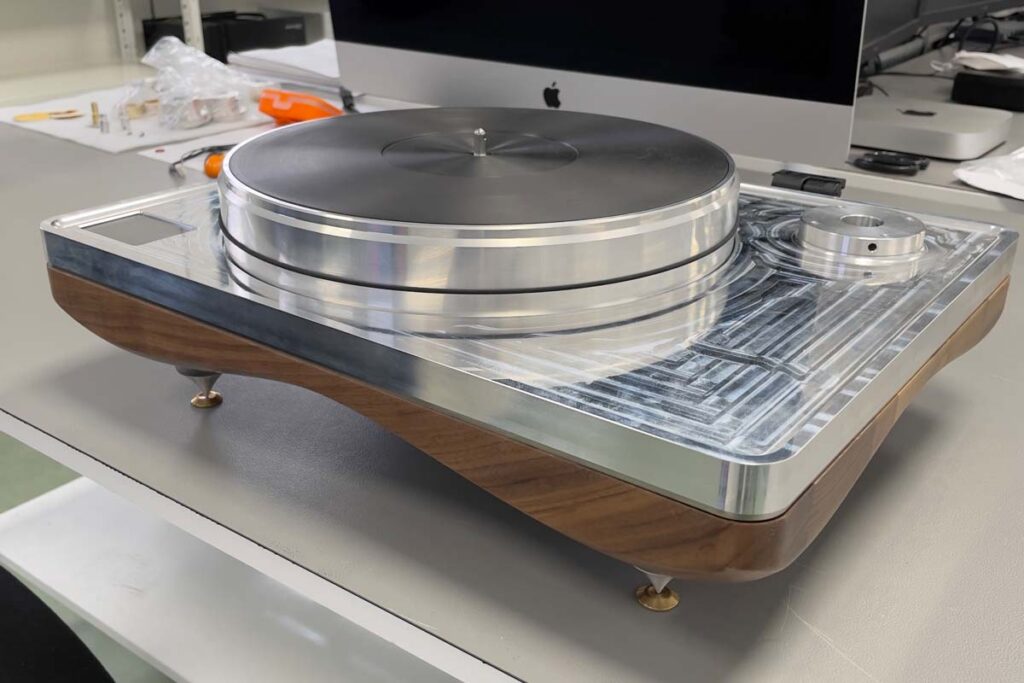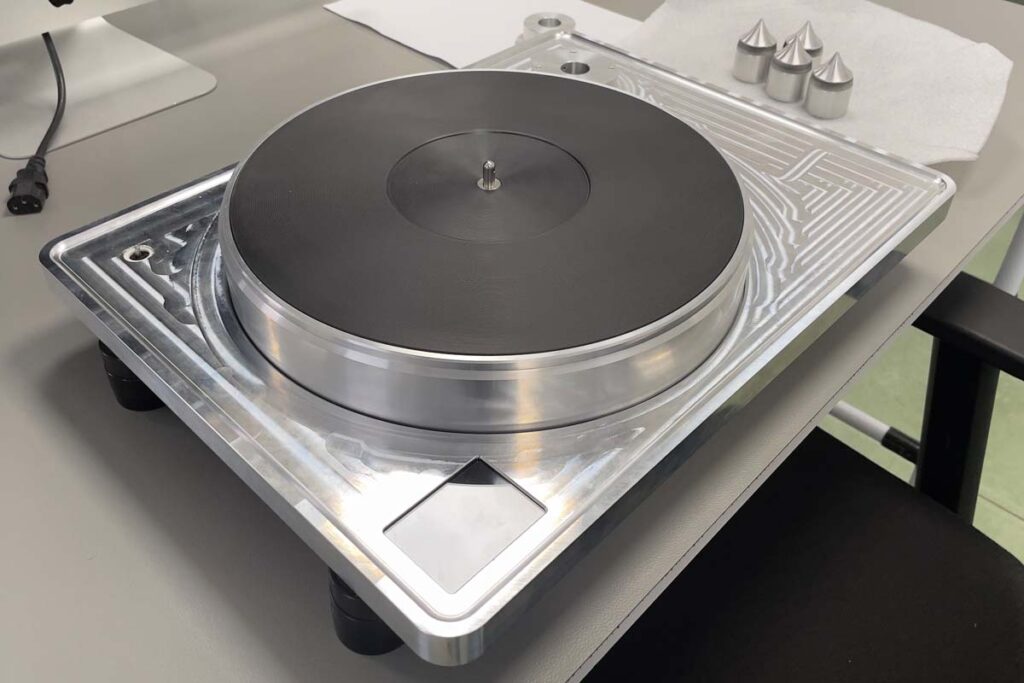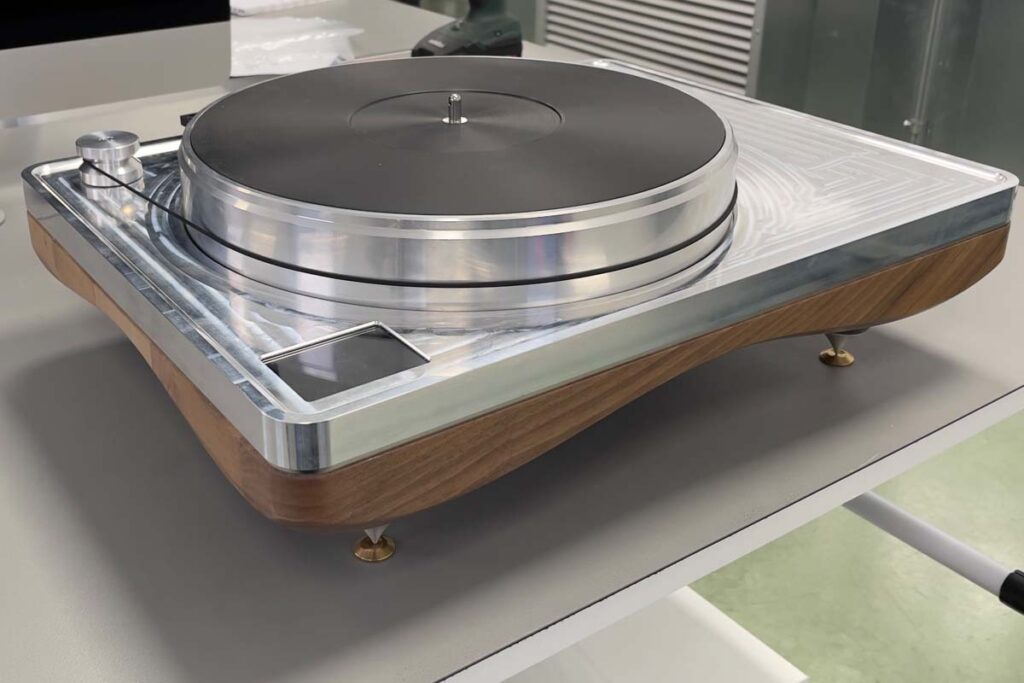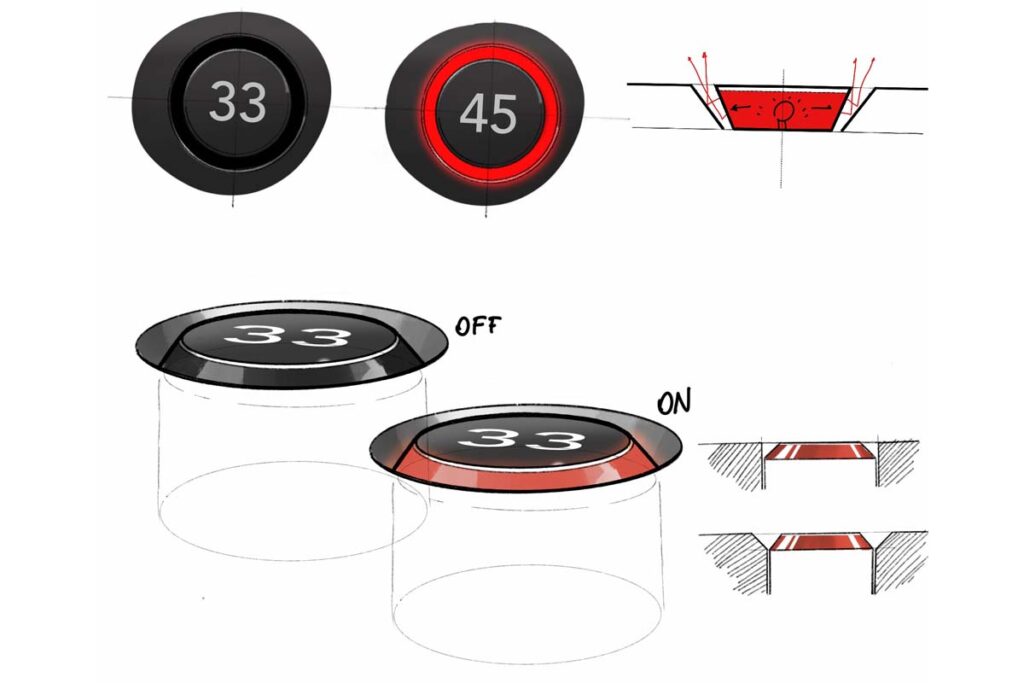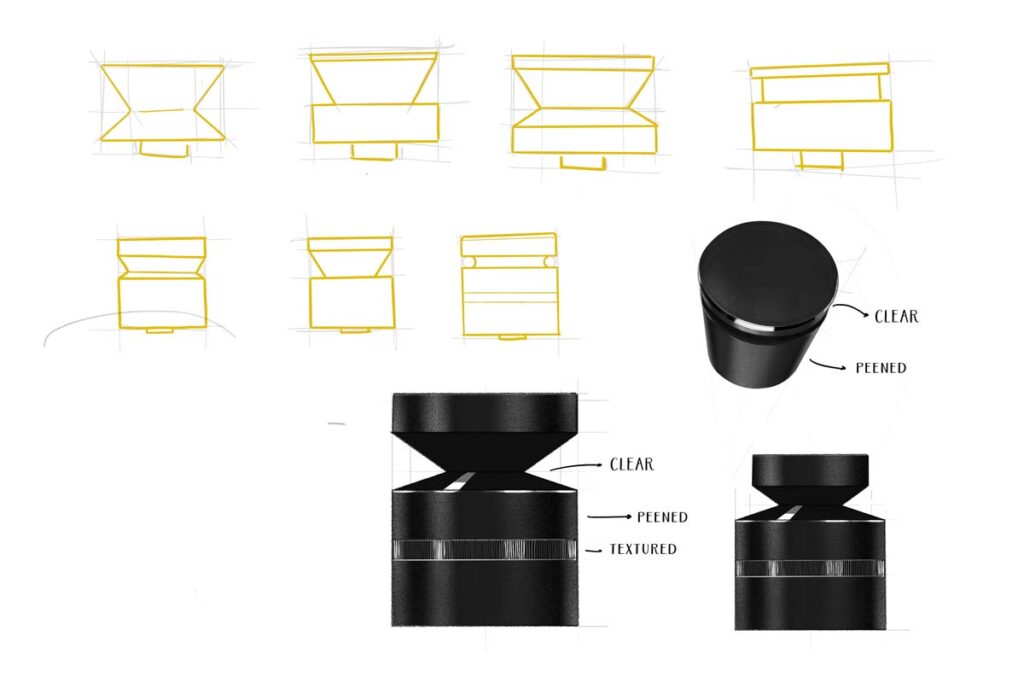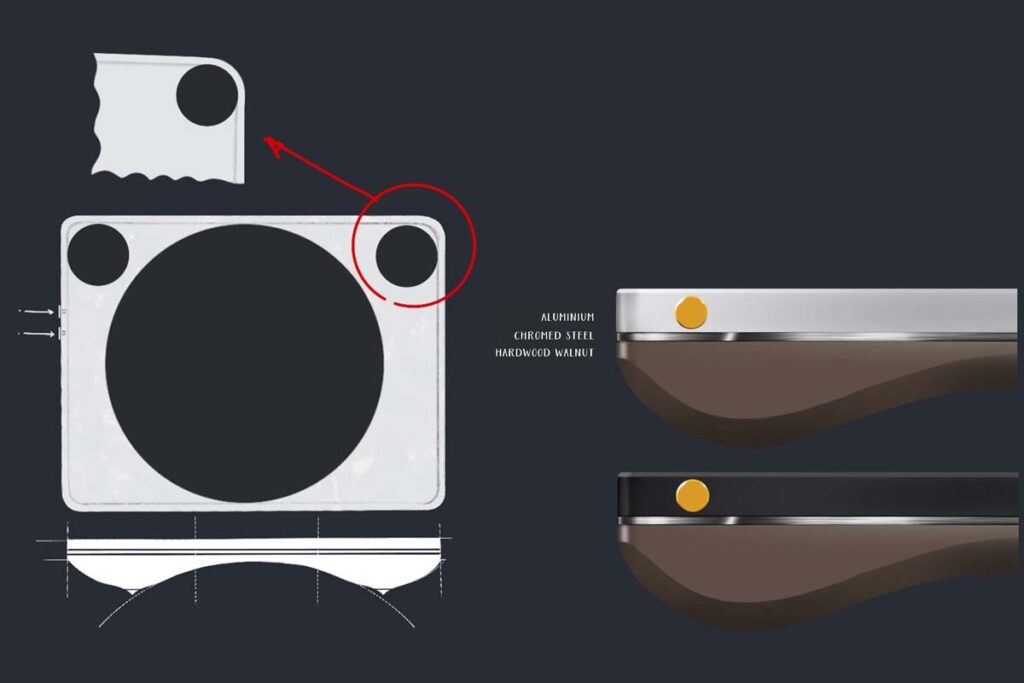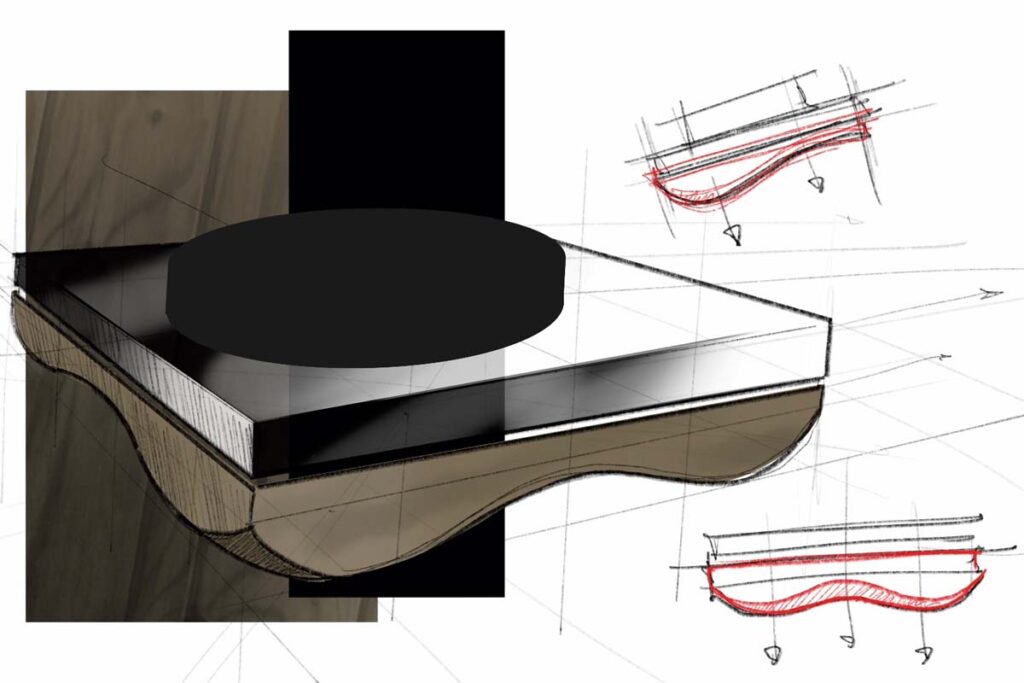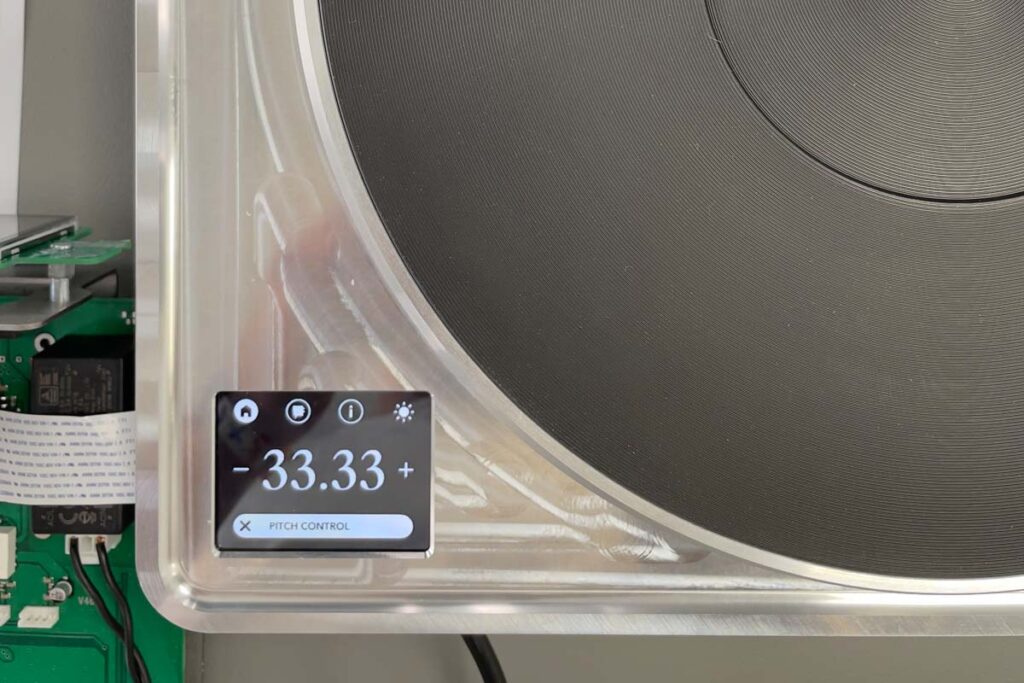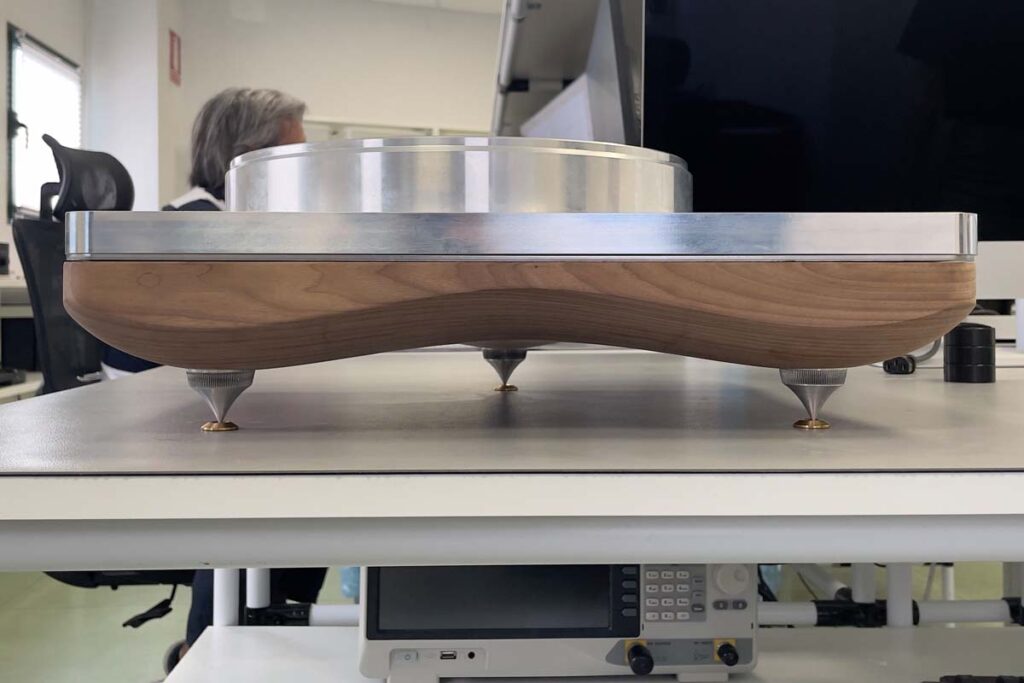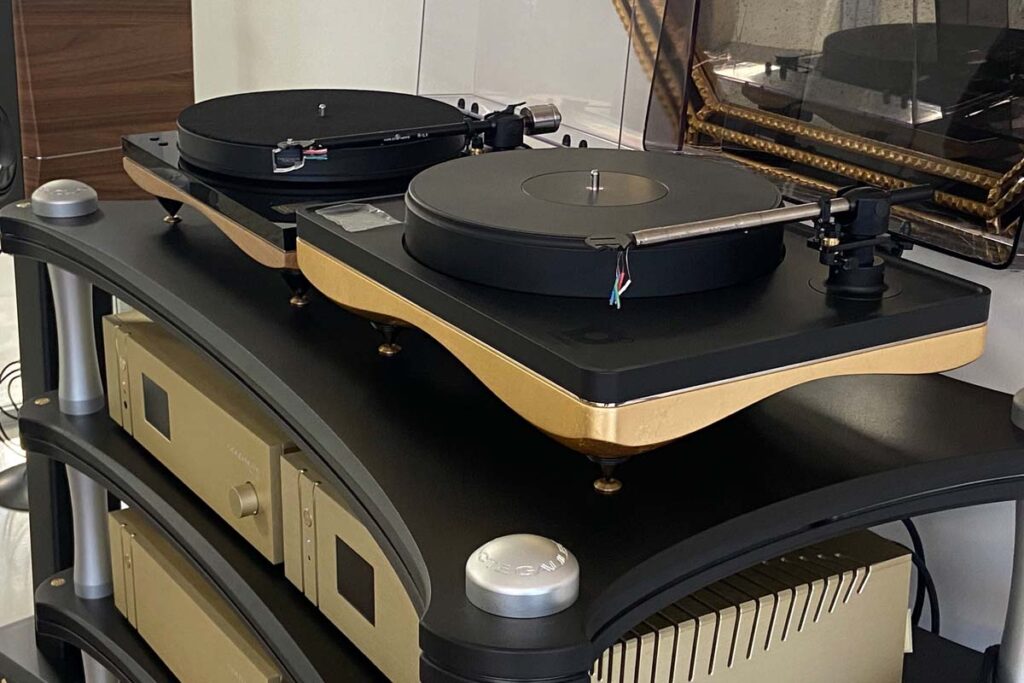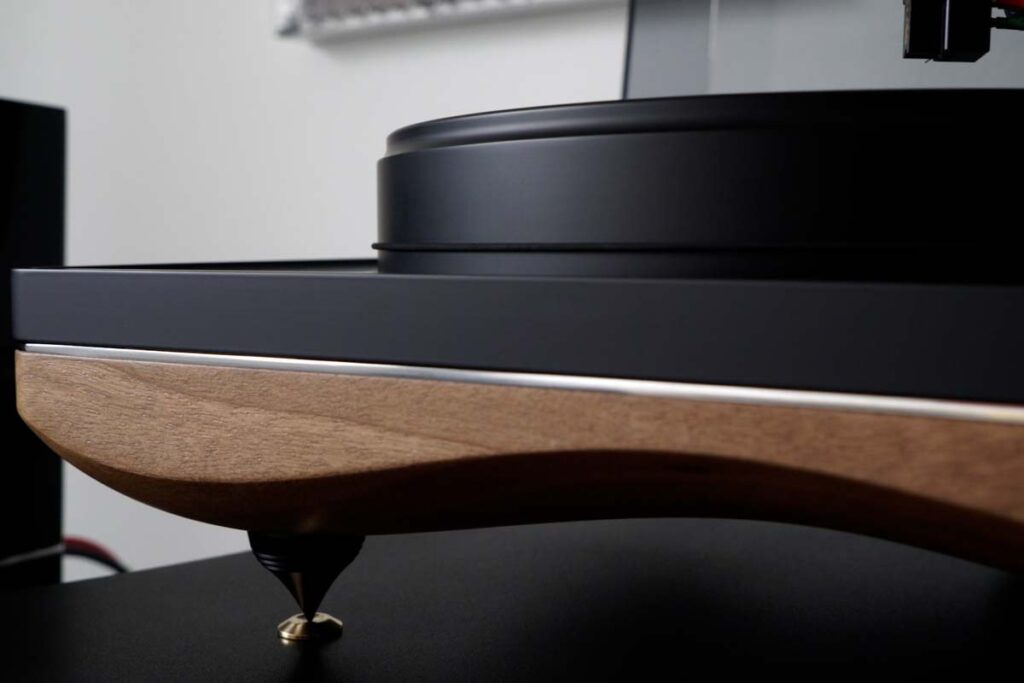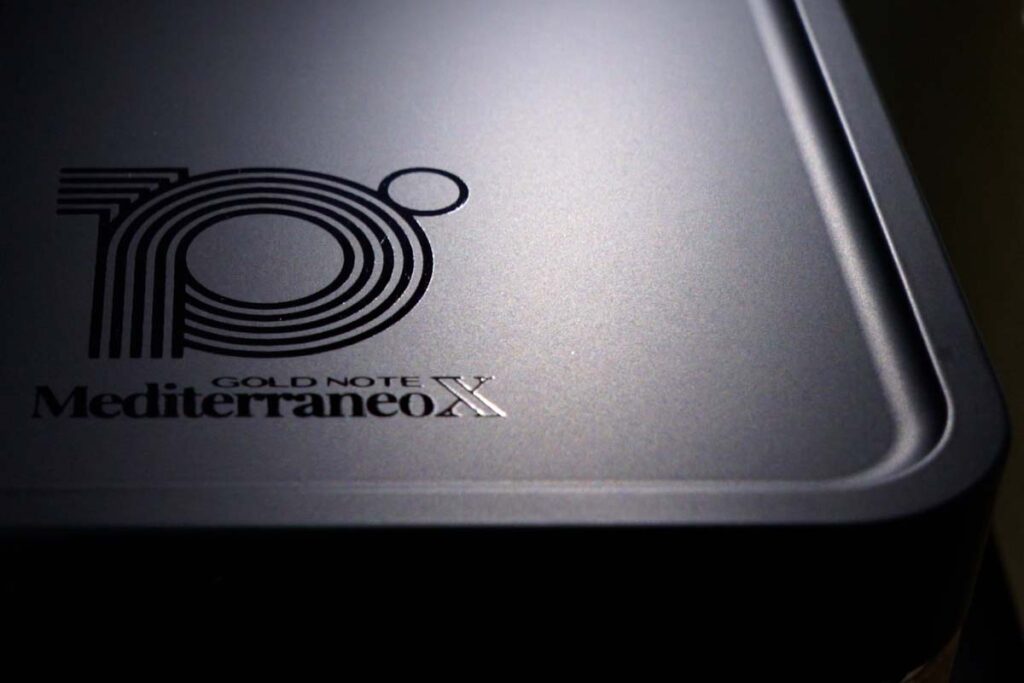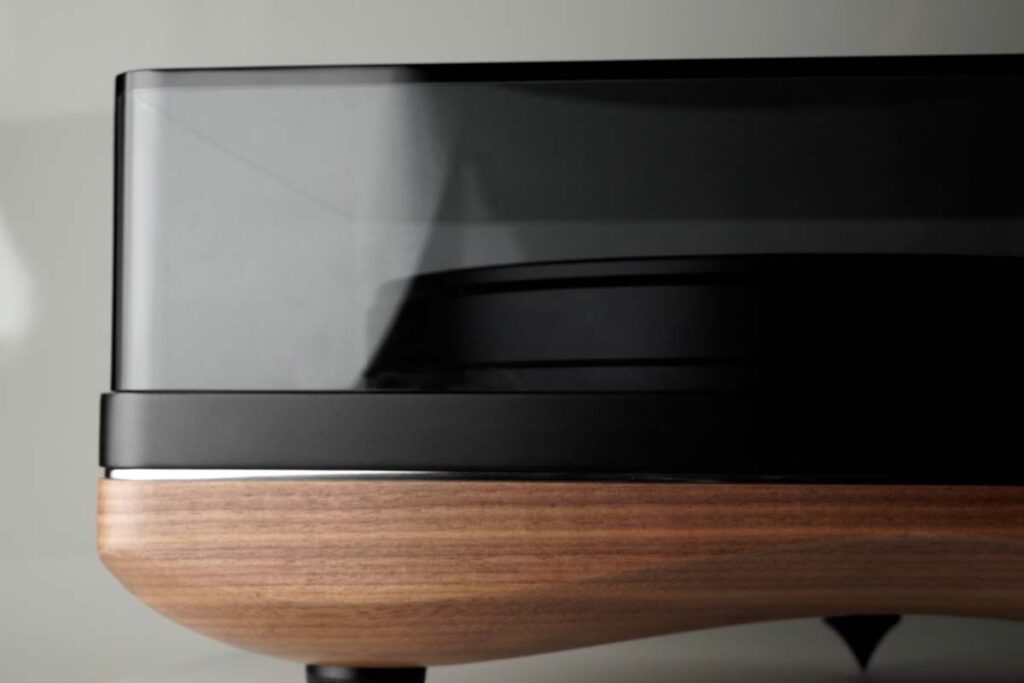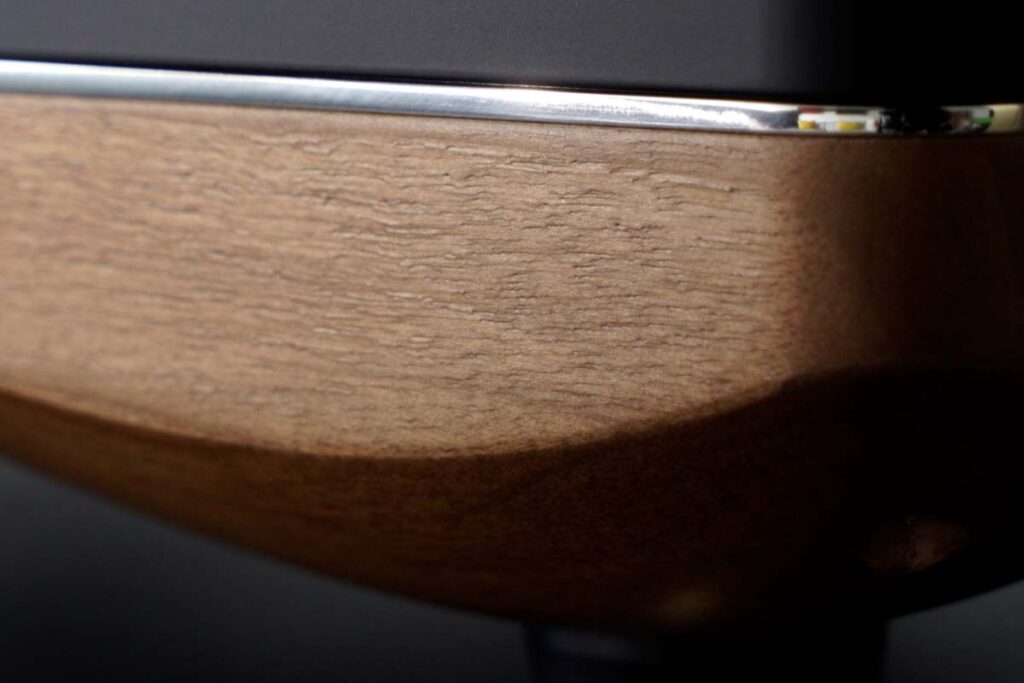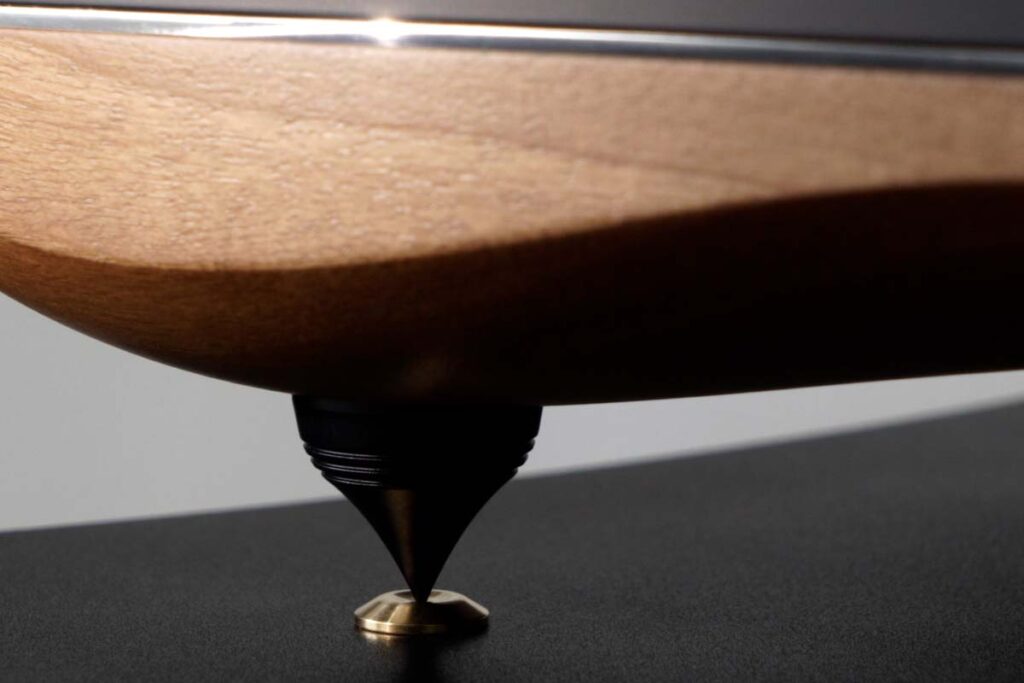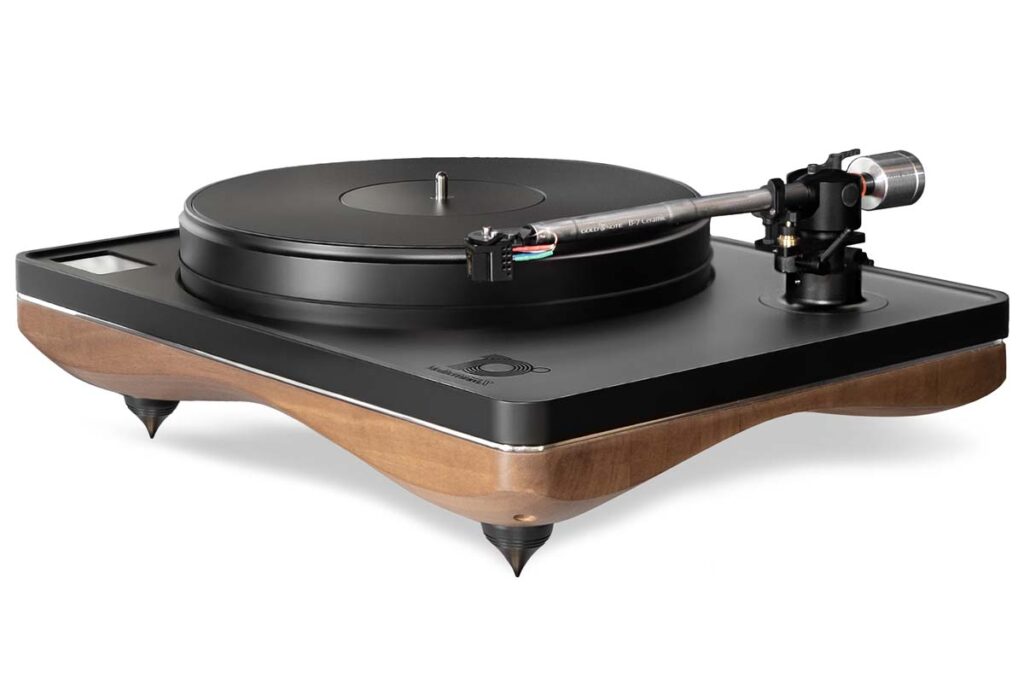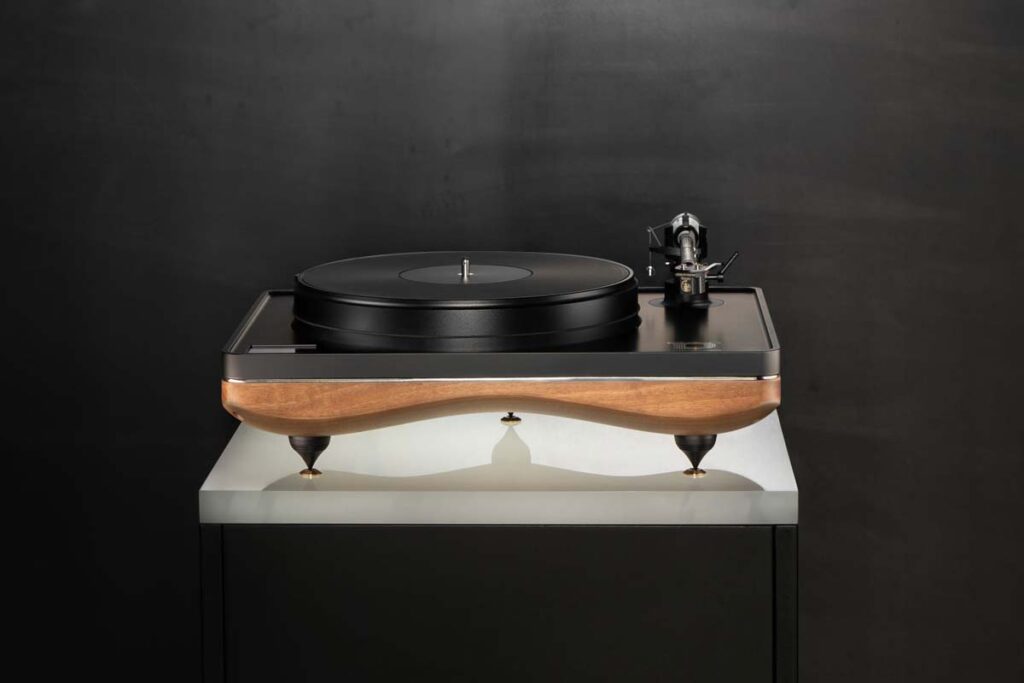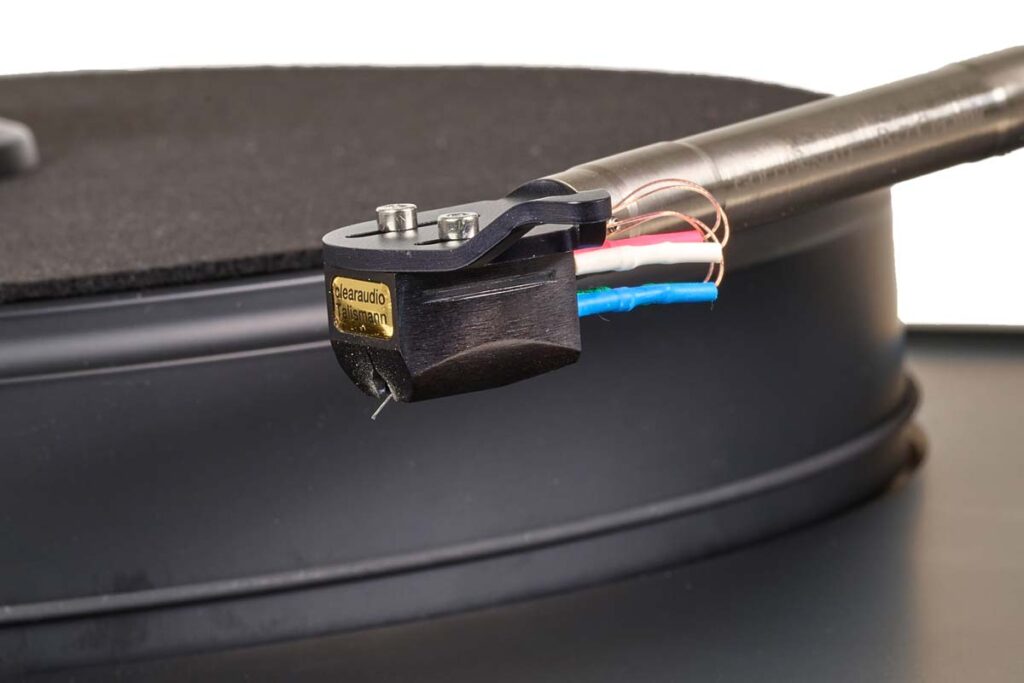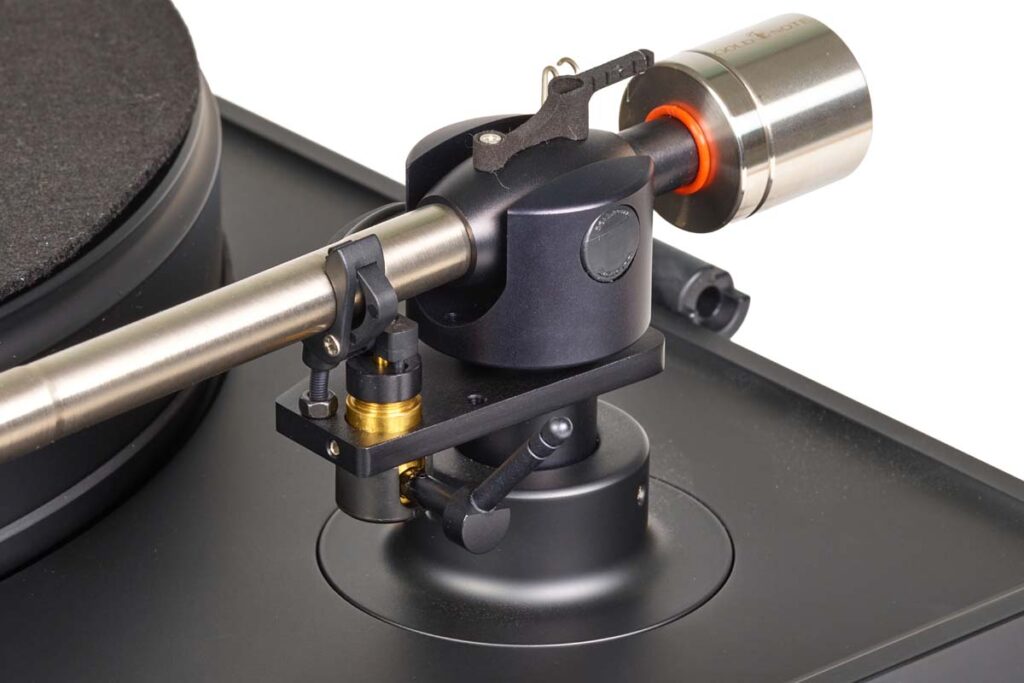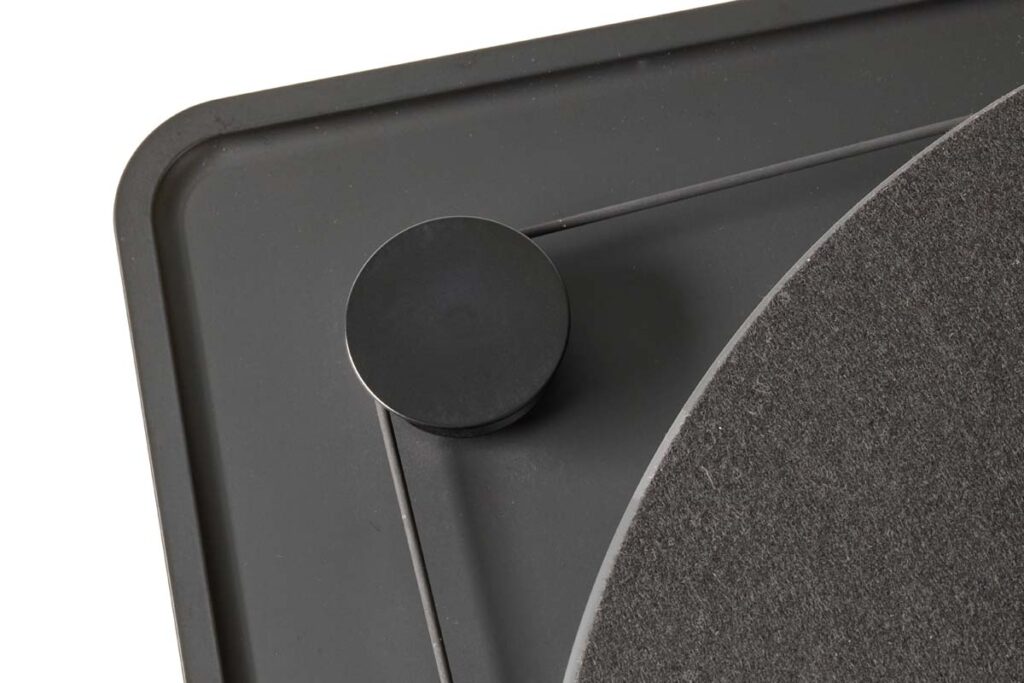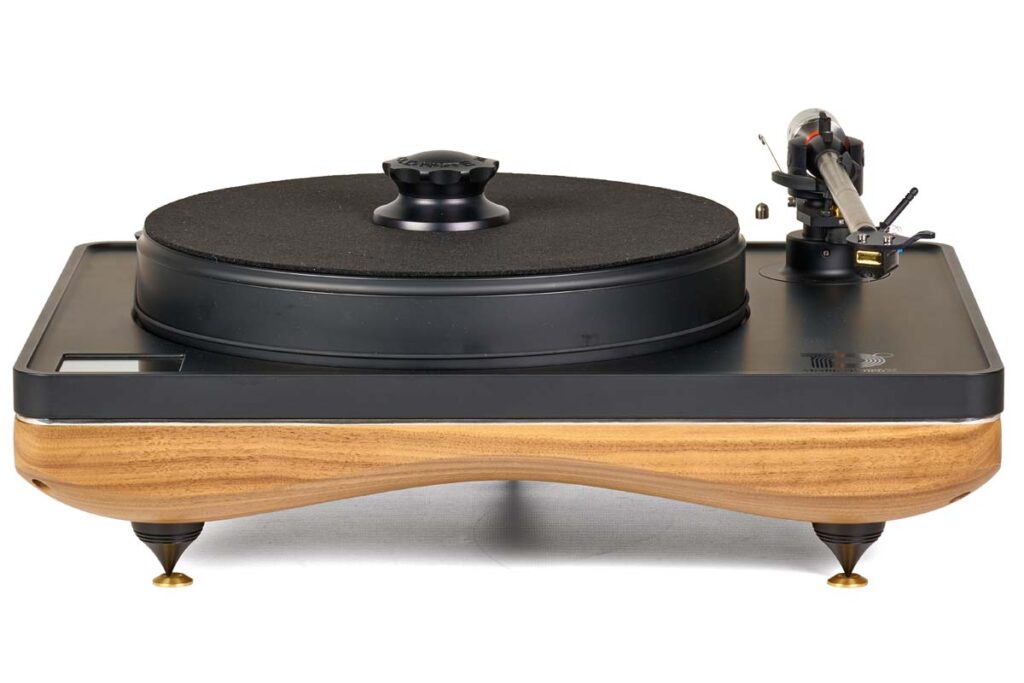The Gold Note Mediterraneo X is instantly awarded the title of “most beautiful of its kind”. But don’t be fooled: Technology and sound quality have not been sacrificed on the altar of design here; quite the opposite!
As soon as the Gold Note Mediterraneo X had taken its place on my rack, I immediately realized that it lived up to all the expectations I have of a high-end product of Italian provenance. Balanced proportions, fine materials, perfectly crafted, the classic recipe. It is amazing how Gold Note managed to become Italy’s largest high-end full-range manufacturer within 10 years with relatively few (albeit highly qualified) staff. There are two explanations for this. Firstly, company founder and CEO Maurizio Aterini has been working as an OEM manufacturer for world-renowned companies for 25 years and can draw on a wealth of experience. The second is the perfectly organized production process, which is constantly being optimized. Editor-in-chief Carsten Barnbeck was recently able to see this for himself during a visit to the company … and was very impressed.
Udo Besser, who recently took over the distribution for Gold Note in Germany and Austria, told me on the phone that all Gold Note products are built in Montespertoli, a small town not far from Florence. Even the pickups are made here. On the occasion of the company’s 10th anniversary, Maurizio Aterini had the idea of taking the already excellent Mediterraneo to a new level. When I asked why the “anniversary model” went on sale just two years later, Besser explained that the development phase had taken longer than planned. The selection of the aluminum coating alone was unimaginably labor-intensive. It has a not inconsiderable influence on the sound behavior and was “heard” with numerous prototypes.
The most obvious change to the original Mediterraneo model is the top plate of the three-layer chassis, which is milled from a solid aluminum block. I like the matt black of the elaborately applied coating visually, but also because of its practical properties: no fingerprints, less sensitive to scratches.
The underlying layer consists of a three-millimeter-thick stainless steel plate. The polished edges form a beautiful transition to the Italian walnut base. In order to keep the wood insensitive to changes in climate and absolutely dimensionally stable, it is stored for a long time and extensively processed using various methods. The three layers of different materials form a genuine constrained layer structure, a tried and tested construction method for damping resonance. The lower part of the chassis made of solid walnut is particularly eye-catching with its elegantly curved silhouette. This design was by no means created purely for visual reasons, but rather to meet technical and acoustic requirements. The hardwood panel has the greatest material thickness at the points of highest mechanical stress, in the area of the aluminum spikes, the motor and the tonearm mount. According to the manufacturer, the transitions are milled in a curved shape, inspired by classical designs by Italian masters such as Michelangelo Buonarroti and Galileo Galilei. This geometry prevents pronounced resonances in the chassis without sacrificing rigidity and stability. Three solid aluminum spikes ensure a tilt-free stand. They can be adjusted in height to level the turntable precisely. Brass coasters are included to protect sensitive surfaces.
At seven kilograms, the turntable is quite heavy and consists of a combination of aluminum and extra heavy polyoxymethylene, which suppresses any “ringing”. The two-part carbon steel spindle rotates on a ceramic ball in a bronze housing. The platter is driven by a Japanese-made 12-volt synchronous motor, which is decoupled from the chassis with elastomer and resin elements. A relatively large pulley with a ground EPDM (ethylene propylene diene rubber) round belt ensures power transmission. Particular attention was paid to the development of the engine control unit. It had to be integrated into the chassis without compromising on performance.
As far as I know, the ability to adjust the torque in five stages while playing is unique. I will come to the sonic effects later. These, as well as all other functions, are controlled via a 44 x 58 millimeter touchscreen. Start-up, start/stop, speed including fine adjustment and an operating hours counter for up to three pickups can be operated via this. I’m not a big fan of touchscreens, but I have to admit that the implementation here is exceptionally well done. Operation is intuitive. The black background contrasts pleasantly with the bright display, which is very easy to read and can be dimmed or completely hidden. The positioning of the unit has been carefully considered: on the front left of the top of the chassis, at a safe distance from the sensitive pickup and only visible from above.
The Mediterraneo X is equipped with the manufacturer’s top tonearm model, the Gold Note B-7 Ceramic. The gimbal-mounted, 9.5 inch long arm has all kinds of delicacies. It falls into the medium-heavy category and is designed according to Baerwald geometry. The tonearm tube is made of titanium, a lightweight yet very rigid material. It is divided into six sections with varying diameters. In this way, resonances are largely avoided. The B-7 Ceramic is supported by four high-precision, individually sealed ceramic ball bearings, which the German manufacturer GRW produces especially for Gold Note. The aluminum headshell can be rotated to correct the azimuth. The height of the arm can also be adjusted. To do this, the grub screws in the shaft holder must be loosened. The lift mechanism works smoothly and precisely. It clearly stands out from the usual suspects in terms of quality. The contact force is adjusted by moving the stainless steel weight. If this is not sufficient, an additional weight is included. The anti-skating force is classically generated by a thread weight. On closer inspection, it becomes clear how much care has gone into this seemingly simple device. The loop with which the nylon thread is hooked into the lever is not simply knotted, but pressed with a tiny sleeve. The weight consists of ballast balls, over which a stylish stainless steel hood is placed. This may not be relevant in terms of sound, but the consistency with which even the smallest details have been executed reveals the product philosophy wonderfully. A little tip: Take a look at the turntable from below!
The internal cabling of the B-7 Ceramic is made of particularly pure copper, and the phono cable included in the scope of delivery also makes an excellent impression both haptically and mechanically: solid, tight-fitting plugs with a sturdy metal sleeve, sensibly flexible braided fabric and a twisted, non-slip ground cable. It would later become clear that the sound was also convincing. A word about the scope of delivery. The buyer of the Mediterraneo X receives a complete package with all the necessary accessories, which is exemplary. I particularly liked the gray-tinted acrylic hood – solid hinges, perfect design, easy to remove: the manufacturer’s quality standards are also evident here.
And now in medias res. The set-up was completed in a quarter of an hour – high-end in the plug-and-play version. I placed the chassis on the rack, a check with the spirit level showed perfect leveling, great! I placed the ceramic ball in the center of the bearing shaft. The steel spindle with three drops of the supplied oil followed on top. With the help of the screw eye, which I screwed into the plate axle, the heavy plate could be easily placed on the spindle. Once the assembly was complete, I replaced the eyelet with the threaded upper part of the spindle. The round belt was easy to fit thanks to the generously shaped pulley. Mounting the pickup was also comparatively simple. If the turntable is ordered with a Gold Note system, this is pre-assembled and perfectly adjusted, Besser informed me. Then all I had to do was attach the counterweight and install the anti-skating unit. To avoid having to push the weight too far back (my cartridge is of the heavier variety), I added the additional weight. A tonearm scale is necessary for adjustment, I used my electronic helper. I connected the cables and off I went.
The first sound impression was already promising, but I allowed the turntable a few hours of continuous operation so that it could recover from the stresses and strains of transportation. What could be more obvious than to treat the beautiful Italian to Vivaldi?
The Concerto for oboe, strings and continuo in A minor, in the recording by the Italian chamber orchestra I Musici, floods my listening room. Spacious, cleanly staggered, opulent natural timbres, substantial in the bass range and finely chiseled treble reproduction – these were the characteristics that went through my mind. Over the course of the next few weeks, this impression was confirmed, at least with all properly produced discs. And what happened with first-class recordings? Amazing things! The 200-gram disc with works by Ottorino Respighi (Belkis, Queen of Sheba Suite & The Pines of Rome, Minnesota Orchestra under Eiji Oue, Reference Mastercuts), produced using the half-speed mastering process, was ideally suited to demonstrate the capabilities of the Mediterraneo X … After the diamond had sunk into the groove, I found myself in the Minneapolis Orchestra Hall. The volume of the concert hall, which holds over 2000 people, was palpable. The orchestra spread out in front of me with enormous depth, each instrument group was assigned a clear place. Even the most subtle dabs of sound were able to assert themselves in the continuously swelling volume. Even when the recording, with its strong dynamics, reached its peak, the sound remained absolutely stable. I was completely drawn into Respighi’s sound-painting worlds, almost sucked in!
Frank Zappa’s Hot Rats, one of his early masterpieces from 1969, is available to me as a formidable Bernie Grundman remaster. The Mediterraneo X brought out all the compositional subtleties. Some details only became apparent to me during these listening sessions. The piece Little Umbrellas lives from the somewhat mysterious melodies. The “X” succeeded in clearly differentiating the closely spaced sounds of wind instruments and keyboards. I was able to follow every melody line with ease – not a matter of course with Zappa’s compositions. The piece is grounded by the virtuoso double bass, which stood immovably in the center of the stage, gnarled and with a full body.
Time to play with the torque settings. At the maximum setting, the playback was very direct and powerful, while the jazzy flow of the piece came across better at low torque. I had the impression that the spatial imaging also benefited. The torque control became my permanent toy. The subtle changes in the sound image were almost always clear; what I liked better depended on the music material.
It should be assumed that a record player in this price range sounds excellent. The Gold Note Mediterraneo X meets this requirement with flying colors. It even manages to make some not-so-great recordings sound good without being accused of whitewashing.
What also fascinates me is the turntable’s development concept, which is consistent in every respect, and its craftsmanship: perfectly thought-out, simple handling and high-quality, first-class materials as well as an elegant design that corresponds to its function. The scope of delivery, which makes additional investments superfluous, rounds off the concept. The possibility of adjusting the sound characteristics to personal taste via the adjustable motor torque is the proverbial cherry on top.
Accompanying Equipment
Turntable: TW Acustic Raven GT2 | Tonearms: TW Acustic Raven 10.5“ and 9.5” | Cartridges: Skyanalog Reference, Clearaudio Concerto V2, Excalibur Platinum | CD-Player: Electrocompaniet EMC 1 MKV | Amplifiers: Electrocompaniet EC 4. 8, Electrocompaniet EC AW250R, Lab 12 Melto2 | Speakers: Audio Physic Spark on Solidsteel SS-5 | Power supply, cables: IsoTek Aquarius, Syncro and Optimum; AudioQuest Yukon and NRG-Z3; Zavfino Gold Rush, Kimber 8TC, WBT | Accessories: bFly-audio Octopus and PolarX, Audio Physic VCF V Magnetic plus, Lehmannaudio Stage 1 record mat, TW Turntable Mat, Sonic Voice, Nessie Vinylmaster
Turntable Gold Note Mediterraneo X
Concept: plug-and-play turntable | Platter: extra-dense POM and aluminum (45 mm, 7 kg) | Transmission: precision-ground belt made of EPDM | Drive: high-torque 12 V synchronous motor | Speeds (±0.1 %): 331/3 and 45 rpm | Speed selector: electronic with fine adjustment | Rumble: -82 dB | Special features: Touchscreen display | Mains voltage: 18 V DC output power (100-240 V/50-60 Hz) | Power consumption: max. 27 W | Dimensions (W/H/D): 47/21/36 cm | Weight: 25 kg | Scope of delivery: tonearm (pre-installed and calibrated), counterweight, protective cover (with spacer), washers for spikes, phono cable, record clamp, felt mat, tonearm scale, overhang template with stroboscope disk, Allen key (2.5 mm/2.0 mm and 1.5 mm), bearing oil, operating instructions | Finishes: Italian walnut or gold leaf with matt black lacquered aluminium top base, plate and metal parts made of black anodized aluminium (other lacquer finishes are also available on request) | Warranty period: 2 years | Price: walnut around €12,000, gold leaf around €13,000
Besser Distribution
Holbeinstraße 8
12205 Berlin
Phone +49 30 856065010
info@besserdistribution.com

